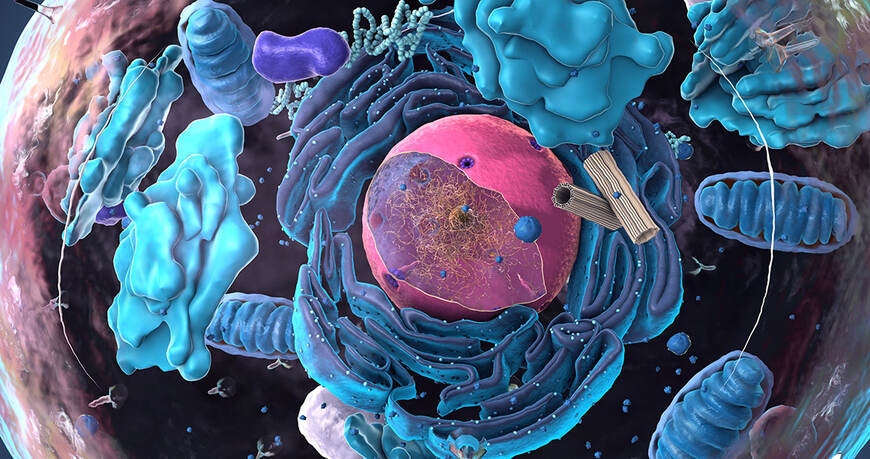Uncategorized
The role of mitochondria in health and disease: uncovering cellular powerhouses

Within our cells, a remarkable and vital organelle known as the mitochondria acts as the cellular powerhouse, generating energy and participating in various essential cellular processes. Beyond their energy-producing capabilities, mitochondria play a crucial role in maintaining overall cellular health and have been implicated in the pathogenesis of numerous diseases. This article explores the fascinating role of mitochondria in both health and disease, shedding light on their multifaceted functions within the intricate machinery of our cells.
Mitochondria: The powerhouses of the cell
Mitochondria are double-membrane-bound organelles found in nearly every eukaryotic cell. They are responsible for generating adenosine triphosphate (ATP), the energy currency of the cell, through a process called oxidative phosphorylation. This process occurs within the inner mitochondrial membrane and relies on the electron transport chain and ATP synthase.
Apart from their role in energy production, mitochondria have several other essential functions:
- Metabolism and nutrient sensing: Mitochondria are intricately involved in various metabolic pathways, including the breakdown of carbohydrates, lipids, and amino acids. They also play a critical role in nutrient sensing and signaling pathways that regulate cellular metabolism.
- Calcium homeostasis: Mitochondria act as calcium storage organelles, regulating intracellular calcium levels. They are involved in calcium signaling, which influences cellular processes such as muscle contraction, cell death, and hormone secretion.
- Reactive oxygen species (ROS) regulation: Mitochondria are both sources and targets of reactive oxygen species. While ROS can be harmful to cells, mitochondria have intricate antioxidant defense mechanisms to maintain a balance, preventing oxidative damage.
Mitochondria in disease
Mitochondrial dysfunction has been implicated in various diseases, highlighting the critical role of these organelles in maintaining cellular health. Here are some examples:
- Mitochondrial diseases: These are a group of genetic disorders characterized by impaired mitochondrial function. They can affect various organs and systems, leading to symptoms such as muscle weakness, neurological abnormalities, and metabolic dysfunction.
- Neurodegenerative diseases: Mitochondrial dysfunction has been implicated in neurodegenerative disorders such as Alzheimer’s disease, Parkinson’s disease, and amyotrophic lateral sclerosis (ALS). Accumulating evidence suggests that impaired mitochondrial function contributes to the pathology and progression of these diseases.
- Metabolic disorders: Mitochondrial dysfunction can disrupt cellular metabolism, leading to metabolic disorders such as diabetes, obesity, and metabolic syndrome. Alterations in mitochondrial function can affect nutrient utilization, insulin signaling, and energy homeostasis.
- Age-related diseases: Mitochondrial dysfunction has been associated with the aging process and age-related diseases. The accumulation of mitochondrial DNA mutations, impaired mitochondrial dynamics, and increased oxidative stress contribute to cellular aging and age-related pathologies.
Uncovering new frontiers
Advancements in research have expanded our understanding of mitochondrial biology and its implications for health and disease. Ongoing studies are focused on:
- Therapeutic approaches: Developing interventions to target mitochondrial dysfunction holds promise for treating various diseases. This includes strategies to enhance mitochondrial function, improve antioxidant defense, and restore cellular energy balance.
- Biomarkers and diagnostics: Identifying reliable biomarkers of mitochondrial dysfunction can aid in disease diagnosis and monitoring. Biomarkers that reflect mitochondrial oxidative stress, DNA damage, or alterations in mitochondrial gene expression are being explored.
- Mitochondrial genetics: Understanding the genetics of mitochondria and their interaction with nuclear DNA is crucial. Studies on mitochondrial DNA mutations, nuclear-mitochondrial interactions, and mitochondrial inheritance patterns contribute to our understanding of mitochondrial diseases and their inheritance.
Mitochondria are far more than just the powerhouses of our cells. They are intricately involved in maintaining cellular health and regulating various biological processes. Dysfunction in mitochondria can contribute to the development and progression of a range of diseases. However, ongoing research continues to unravel the complex role of mitochondria, opening up new possibilities for therapeutic interventions, diagnostic tools, and a deeper understanding of human health and disease. By harnessing the potential of these cellular powerhouses, we may uncover innovative approaches to combat mitochondrial-related disorders and improve overall health and well-being.


